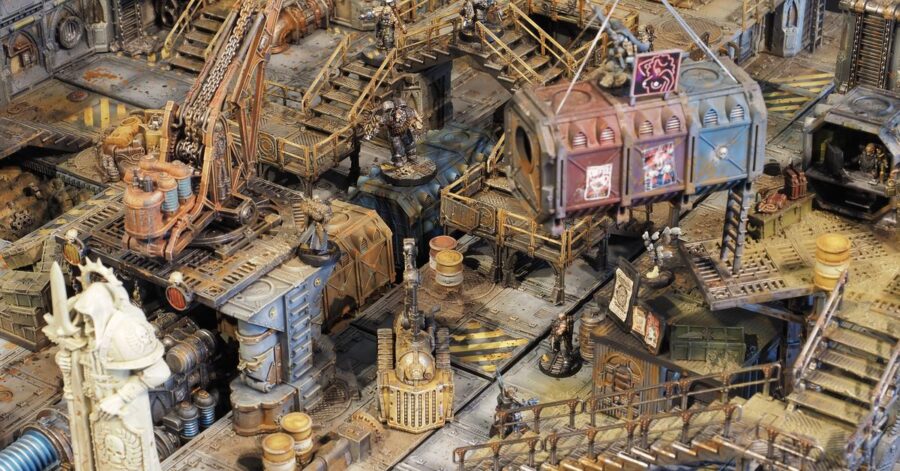The world of Warhammer 40,000 is a venue to tell big stories. Think entire star systems engulfed by war and planet-sized battlefields with millions of nameless soldiers on the front lines. But that’s not the only way that stories get told in the grim darkness of the setting’s far future. Publisher Games Workshop has many spinoff brands, and perhaps the most unique is a game system known as Necromunda.
Where a game of 40K might require hundreds of fully-painted miniatures on each side, a game of Necromunda only requires a handful. Those same units carry over from game to game, gaining new weapons and abilities as well as debilitating injuries. As such, this small-unit skirmish game is capable of telling far more intimate stories than the larger wargame. That’s part of the reason that Necromunda is experiencing a renaissance, one that has both empowered and reinvigorated its fandom.
On the launch of Necromunda: Hired Gun, a new first-person shooter, we sat down with two experts to learn about the source material. Steve “Hivescum” Uden and Chris “Underhiver” Iddon are co-hosts of the Necromunda-themed podcast Sump City Radio. Together, they’ve helped us understand a bit more about the game’s history, and pointed us toward some of the very best artists currently working in the space.
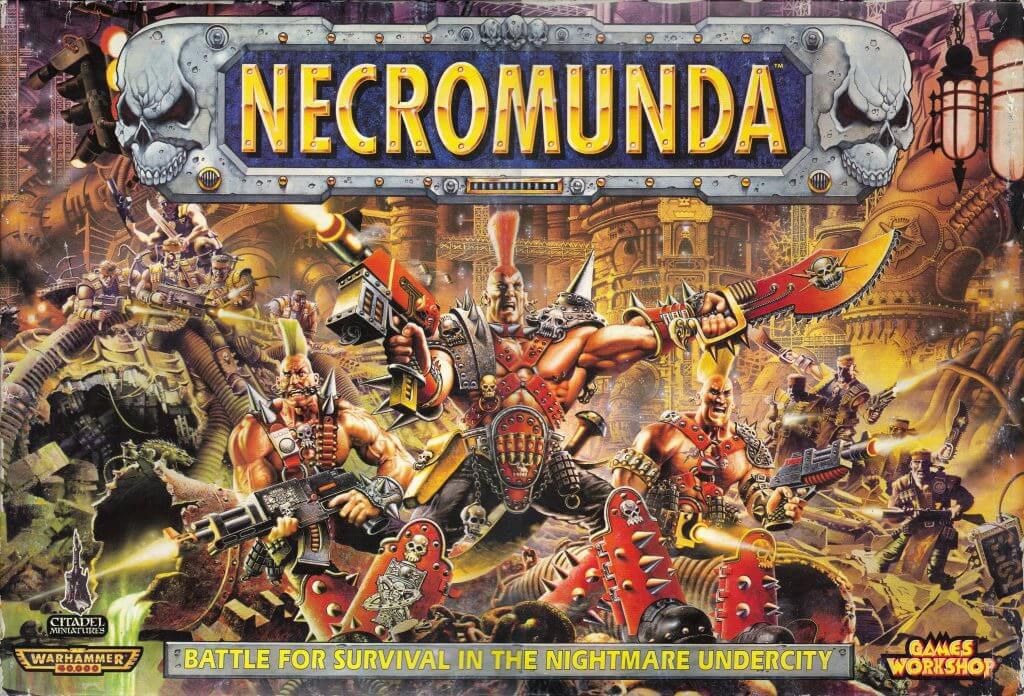
Necromunda was first launched in 1995, making a splashy entrance into the hobby on the pages of White Dwarf magazine. The game’s art featured big, burly men with even bigger hair, evoking ’80s-inspired action heroes. But the background for Necromunda was introspective: This was a story about the homefront, about what life was like for the human civilians working to keep the engines of war on the battlefield. It was a game about the working class. Most importantly, every character on the table had a name.
“That’s what drew me into it in the first place,” said Uden. “You have actual characters, and it’s not just faceless mooks; it’s people who progress. They get better. They get injuries. They can get worse at things. And that just added so much flavor and character to it. In fact, it’s probably the closest introduction that I had at that age into things like role-play.”
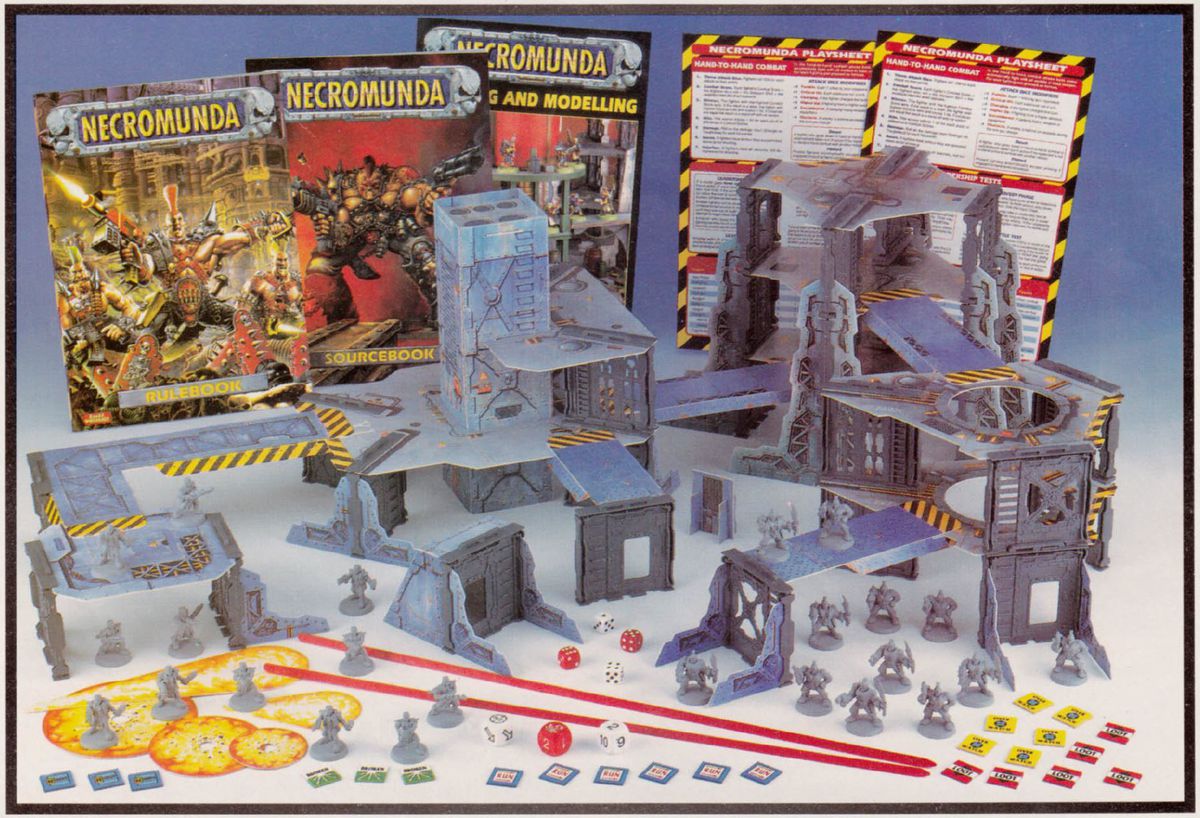
That first boxed set, titled simply Necromunda, became an instant classic not just for its characters. It also stood apart because of its terrain — multi-story plastic and cardboard structures that gave its tabletop battles impressive height and modularity.
“For me, when I walked past Games Workshop in 1995 and saw the old cardboard terrain, with the plastic bulkheads, and the painted miniatures within it, it just drew me like a moth to a flame,” said Iddon. “You’ve got this four-by-four foot representation of this one section within this massive megalithic structure — this huge, mountainous structure — and you see it all! You see the pipes; you see the puddles of toxic ooze; you see the broken-down buildings, the kind of repurposed stuff. It’s essentially what makes Necromunda unique.”
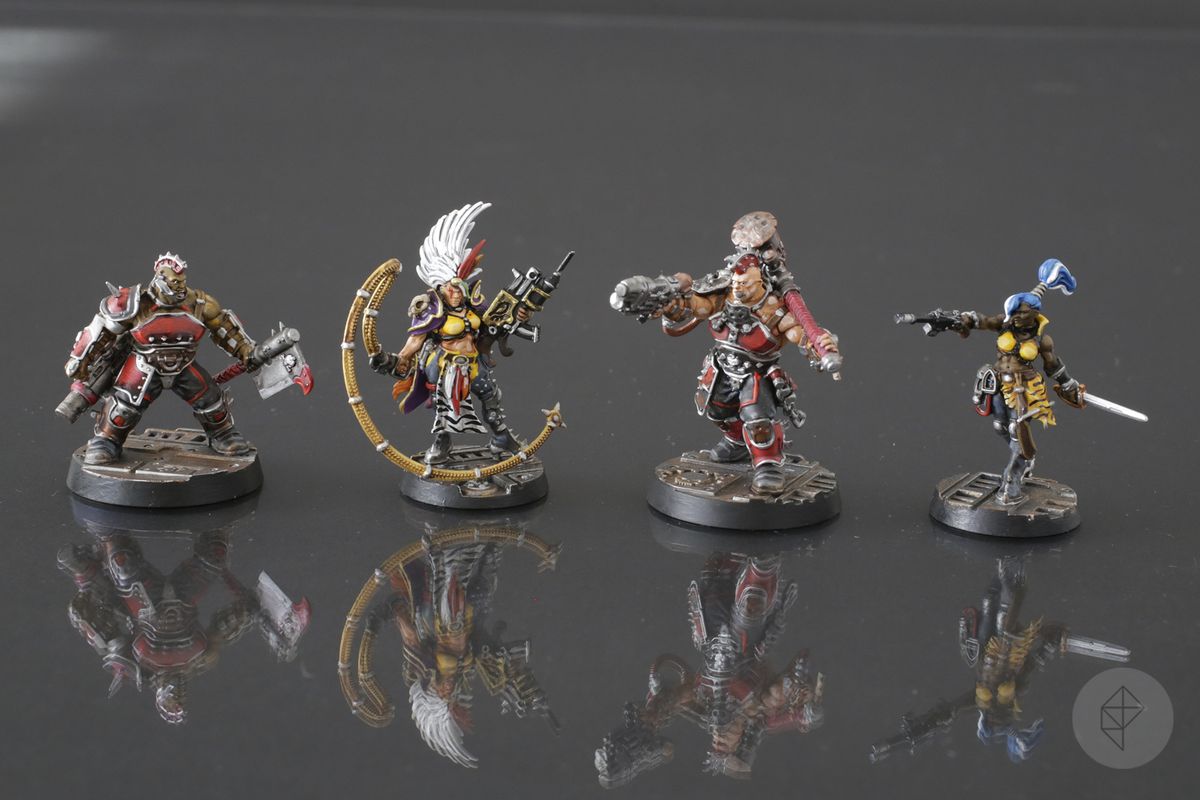
The Necromunda line was relaunched in 2017 and has since gone on to become one of Games Workshop’s most popular franchises. New material, including a revised starter set, is already on the way. But some of the most exciting Necromunda-themed stuff is being produced by fans. Polygon asked the hosts of Sump City Radio to call out some of the best artists working to create for the world of Necromunda. We’ve included images from their latest projects and given each one a bit of room to describe their style.
Leonard Dime
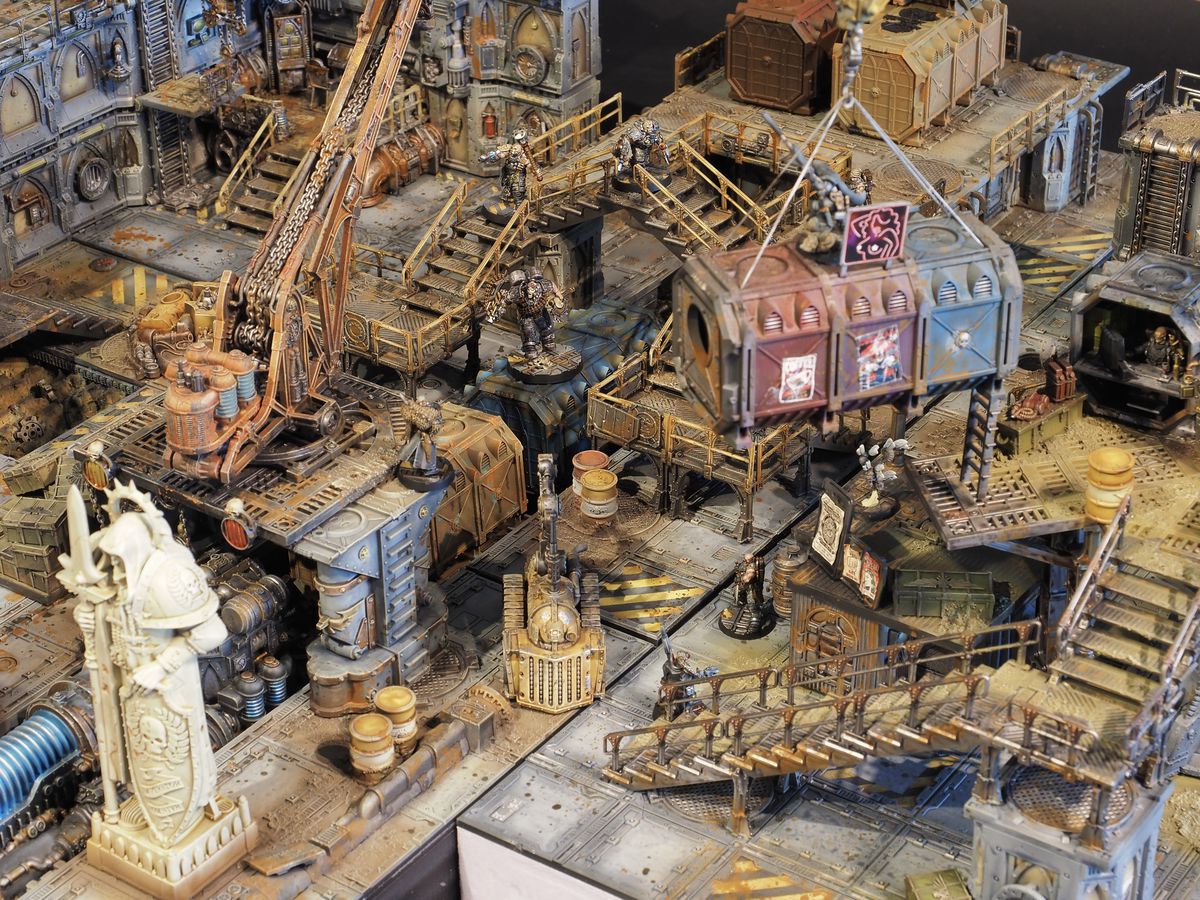
I’ve been involved with Games Workshop game systems since I was 12 years old, and that was 28 years ago. What struck me right away, when I first saw a game played, was the scenery. The story it could tell and the impact it had on the game. Building terrain has been a difficult process in the past, but with recent releases from Games Workshop, it has become much more attainable to create very nice-looking gaming surfaces.
The Necromunda terrain selections are very well-composed and fit seamless with Games Workshop other game systems terrain. Thus I decided to merge the various systems terrain into Necromunda. The struggle now was to not go overboard with details, making the gaming surface unplayable. This was solved by placing all the details and themes on or along the walls. Painting is also kept fairly simple, using a desaturated pallet and fewer colors. I don’t want the terrain to take the spotlight off the truly great creations, the miniatures, the actors in the story.
Find more at the Rapid Tabletop website.
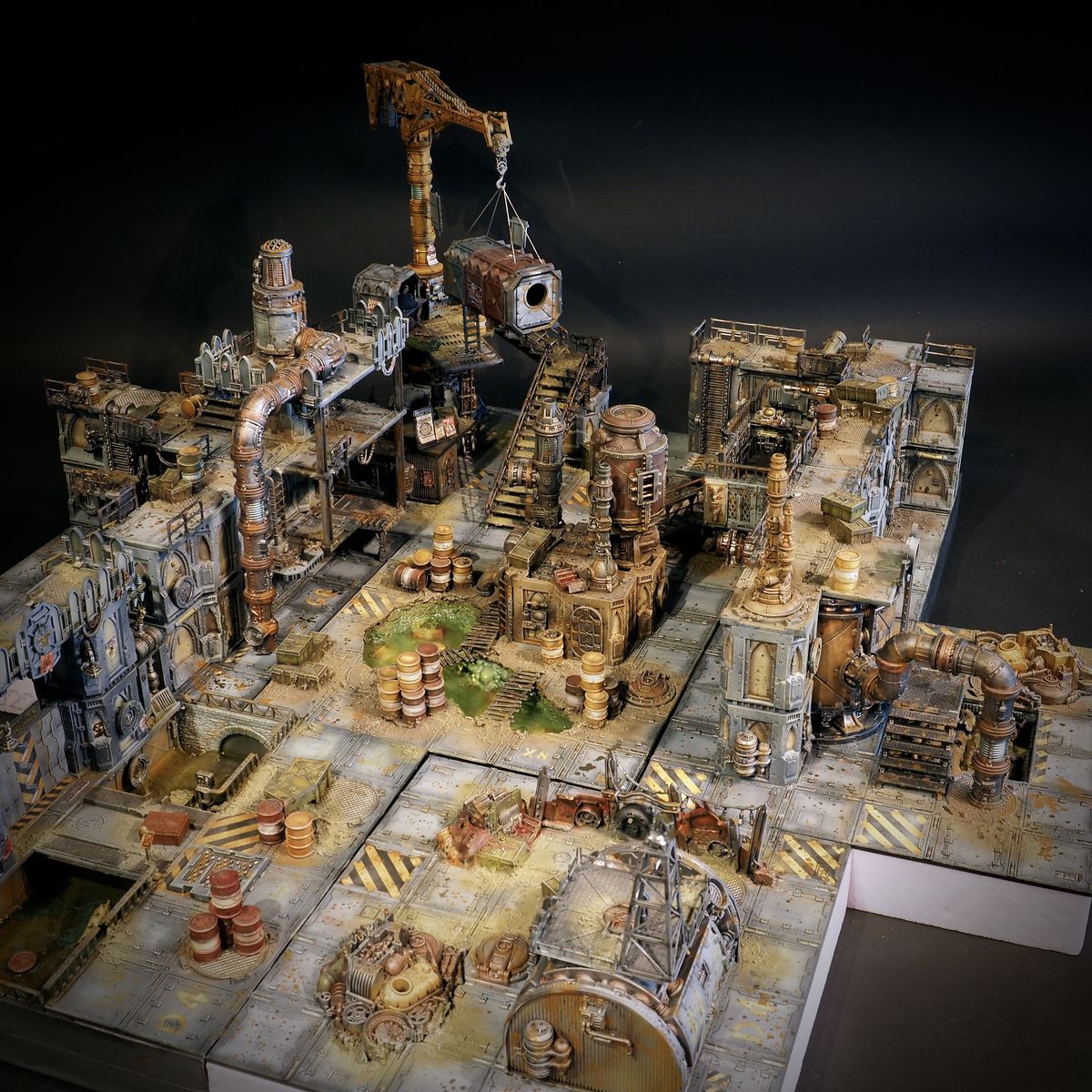
Photo: Leonard Dime
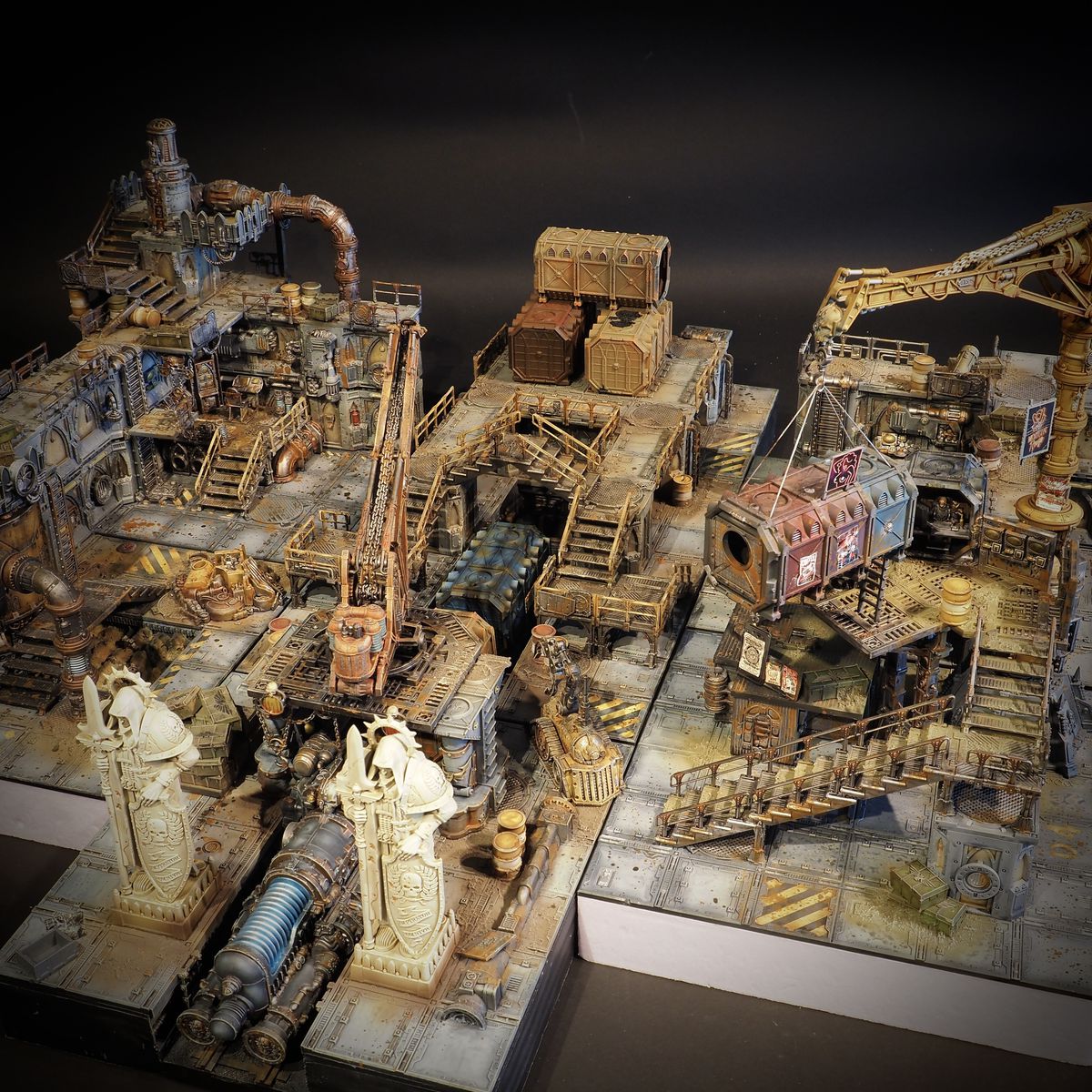
Photo: Leonard Dime
James Ewing

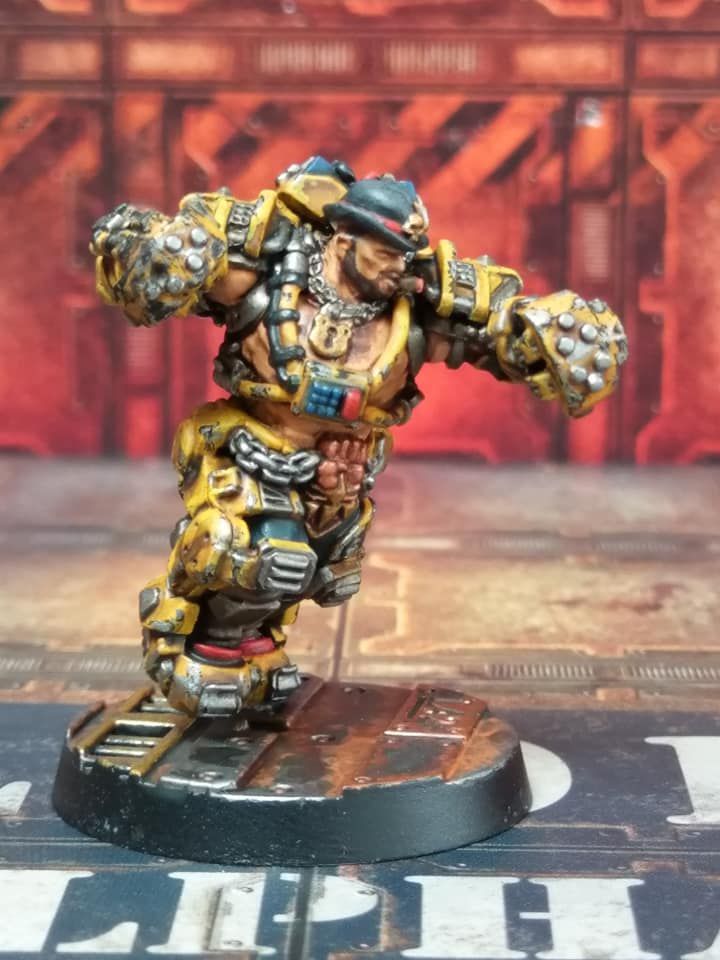
I have always enjoyed bringing characters to life through sculpting and kitbashing miniatures. Every model I make has its own story, and I always prefer to make a flawed character rather than a god killer. It’s all about the RPG element for me. Watching a character come from nothing and make a name for itself on the tabletop is great fun. Then again, watching it die facedown in a puddle after catching a hail of bullets can be fun, too. Just as long as the story of their demise is a good one. Either way, it’s always nice to have a model that represents everything about the character. A model that I can be fairly certain that no other gamer has.
I had the idea for William ‘Biffer Bill’ McCormack when the news of the Orlock servo-harness landed. I wanted to create a character who wore an antiquated version of the more streamlined servo-harnesses worn by the Orlocks of this time. In my mind, Biffer’s servo-harness has been passed down through the generations, and he has cared for it and tinkered with it over the years in much the same way that his father and grandfather did before him.
He lives in it. It is as much a part of him as his own limbs. When he takes it off, he feels ungainly and strange. I also wanted to give it the impression that he was wearing a smaller, more personal version of the power loader from the film Aliens. Hence the finished paint job. Biffer, even though he is an Arms Master, is a man of very few words. He prefers to guide his fighters with an iron stare and let his fists do the talking.
Find more of Ewing’s work on Instagram.
Alaistair Fleming

For as long as I can remember, I’ve loved science fiction and fantasy, so when I discovered Warhammer at the age of eleven, it instantly struck a chord with me. I’ve always been into art and making things, and this new world I’d discovered just seemed to have so much depth and detail to explore — limitless room to create and tell stories with the official lore, known as “fluff,” acting as a guide. Of the two main official settings, the one that really appealed to me the most was Warhammer 40,000 — set in an impossibly grim version of the future where humanity is just barely clinging on, attacked from all sides by a multitude of threats ranging from rampaging aliens to insane and malevolent cultists worshipping the terrifying Gods of Chaos.
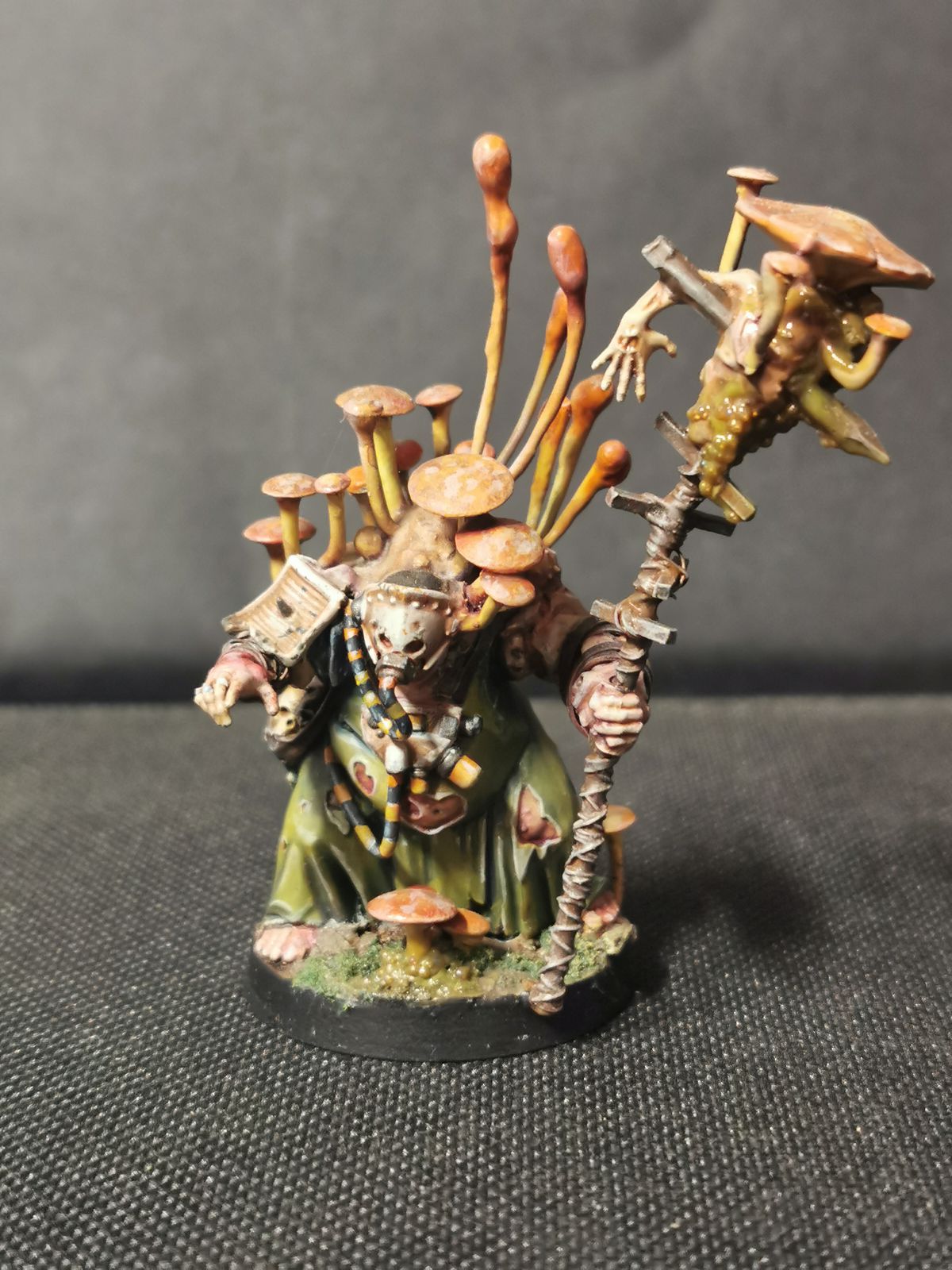
As a maker I’ve always been allergic to following instructions, so from the very beginning in the hobby I wanted to create things that were entirely my own, despite coming from a range of kits available to everyone. The easiest way to do this is what is known as kitbashing — mixing and matching parts from existing kits as well as other found objects in order to make something new and that hopefully nobody else has! Starting off with simple swaps of components — heads and arms most often — I graduated pretty quickly to much more complex builds using parts from a huge range of kits, as well as pieces I sculpted or made myself as my skills grew.
Over the last six months I’ve been working on a new project, this time set in the Hive City Necromunda. It’s a claustrophobic nightmare teeming with downtrodden humanity living in the worst possible conditions — perfect for creating the kinds of creatures and characters I most enjoy. I’ve been fascinated for years by the Cordyceps fungus, familiar to anyone who’s played The Last of Us. It’s such an alien form of life and it seemed perfect for the setting, so I got to work on building my own little army of infected folk to use on the tabletop! They’re made from a large range of kits and also involved a lot of sculpting and making parts from scratch — the mushrooms in particular took a long time!
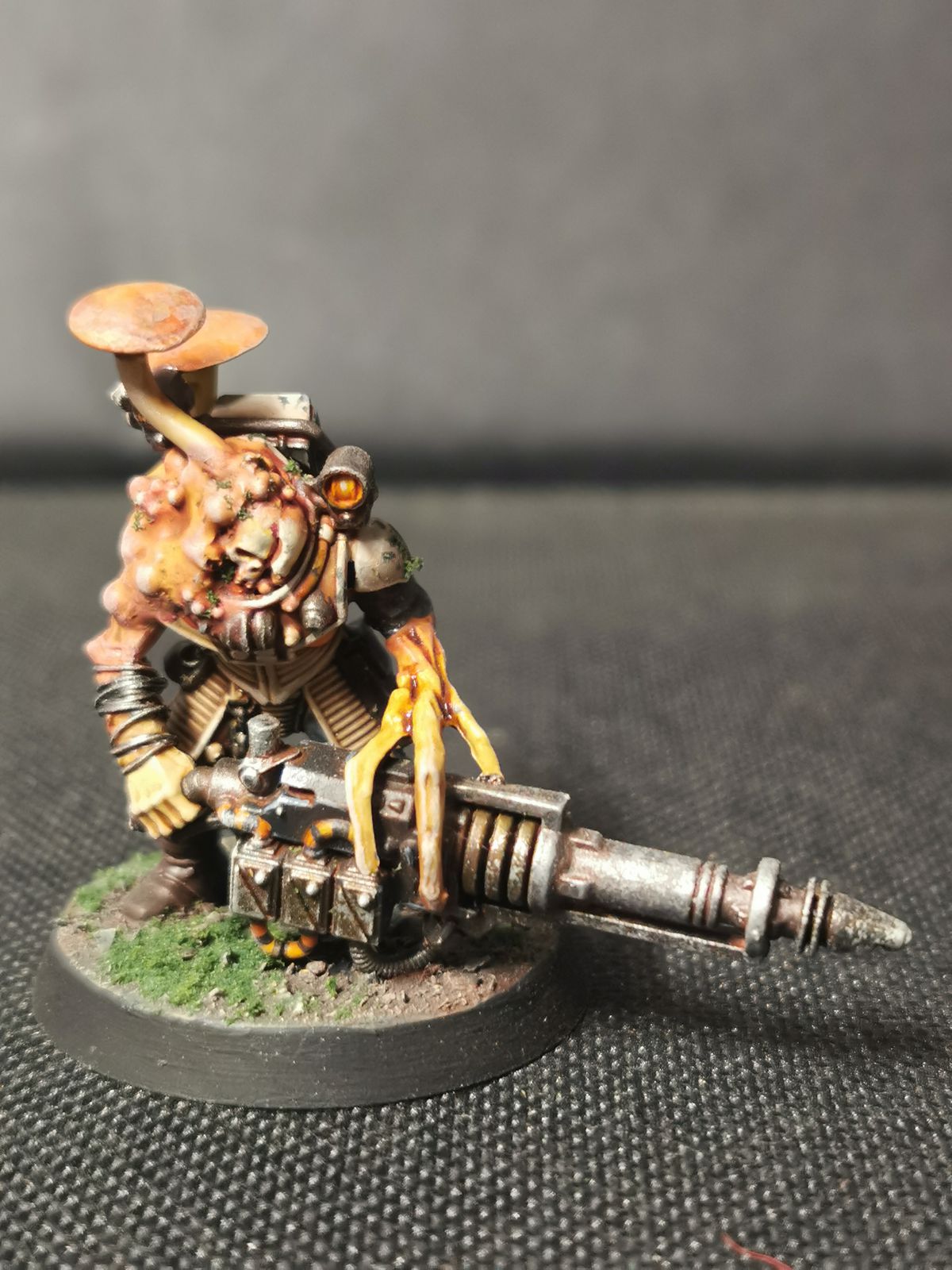
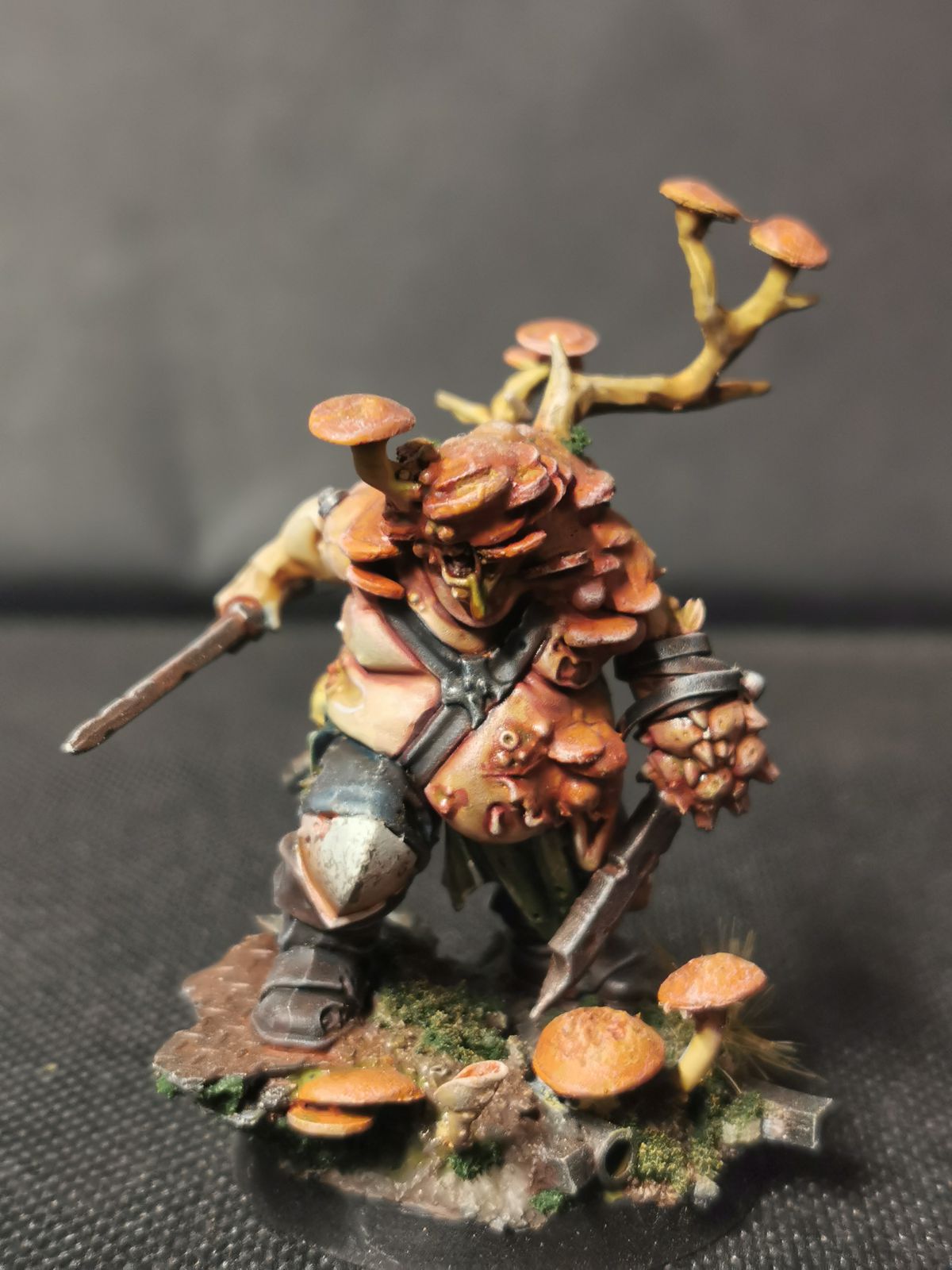
It’s been worth the effort though, as some of my favorite and most popular work has come from the project — I know of at least a dozen people who have started their own little “Grimshroom Warbands.” This for me is the best part of the hobby — it’s a vibrant and open community full of awesome creatives always open to sharing ideas and techniques. Everyone sparks off one another and there’s always a new idea to explore, the weirder the better!
Find more from Fleming on Instagram.
Sol Vince
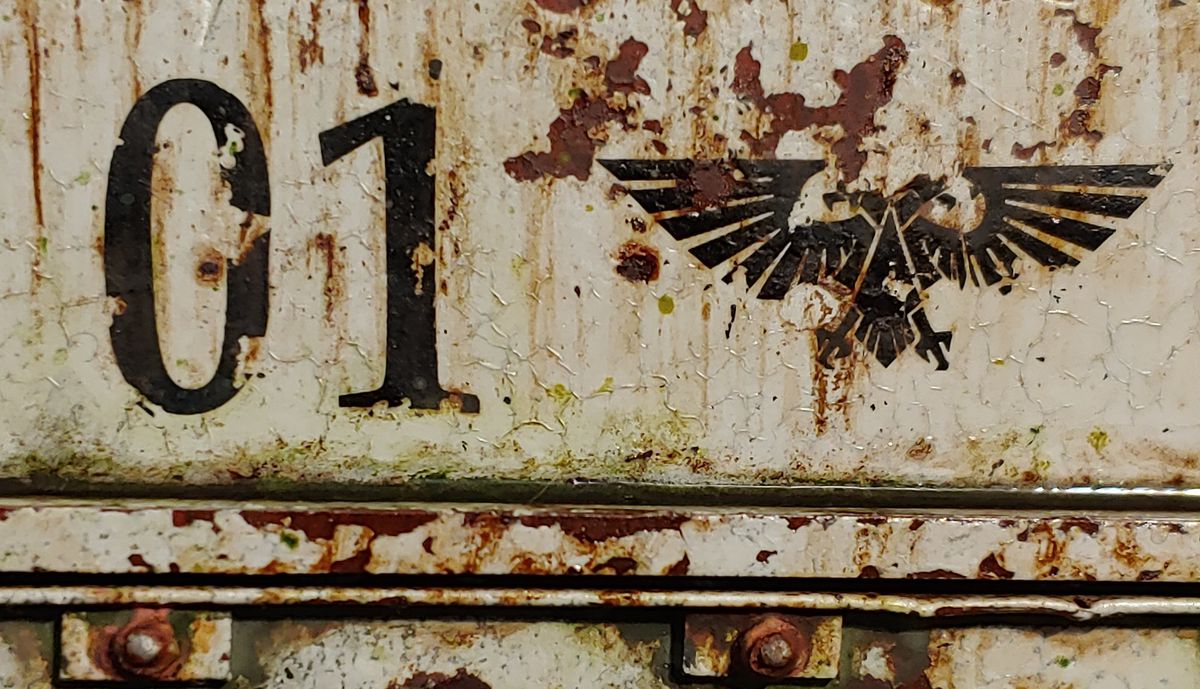
I’ve been in the Games Workshop hobby scene for around 25 years. My first experience with it was when I was around 10 years old and I noticed some guys at a local hobby shop playing a game of Warhammer 40,000. Finding out that there is a game that can be played while utilizing terrain that can be built in vein to train dioramas in quality opened my eyes to a whole world of possibilities.
Recently I’ve enjoyed seeing how while Games Workshop has been expanding their miniature line, the quality of terrain has also been getting better and better. The amount of realism people are starting to put into their own creations has been great to see, especially within the Necromunda community. I look forward to Necromunda: Hired Gun being released and seeing what the level designers have come up with in which I can draw even more inspiration for future projects from.
Find more of Sol Vince’s work on Instagram.
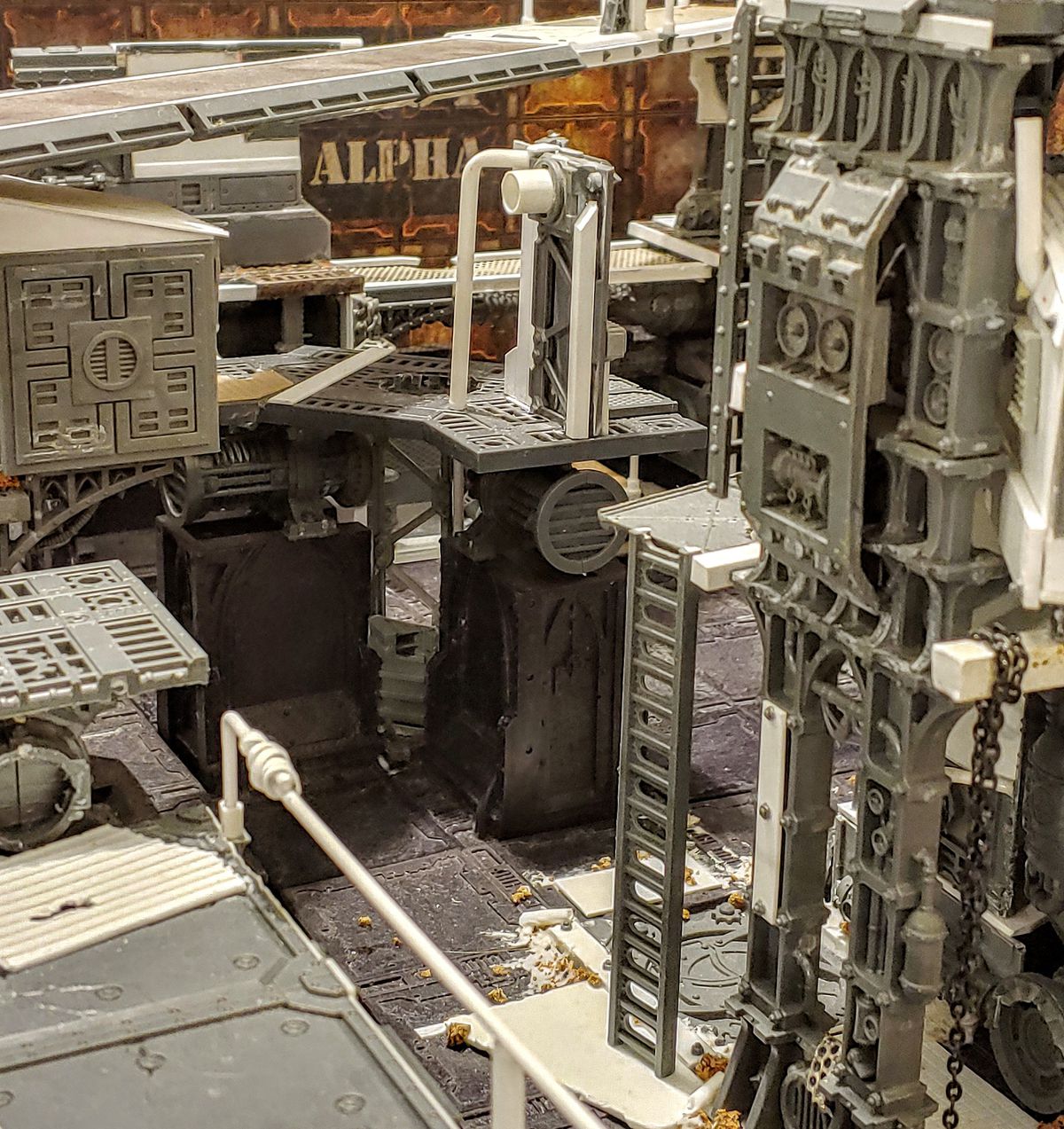
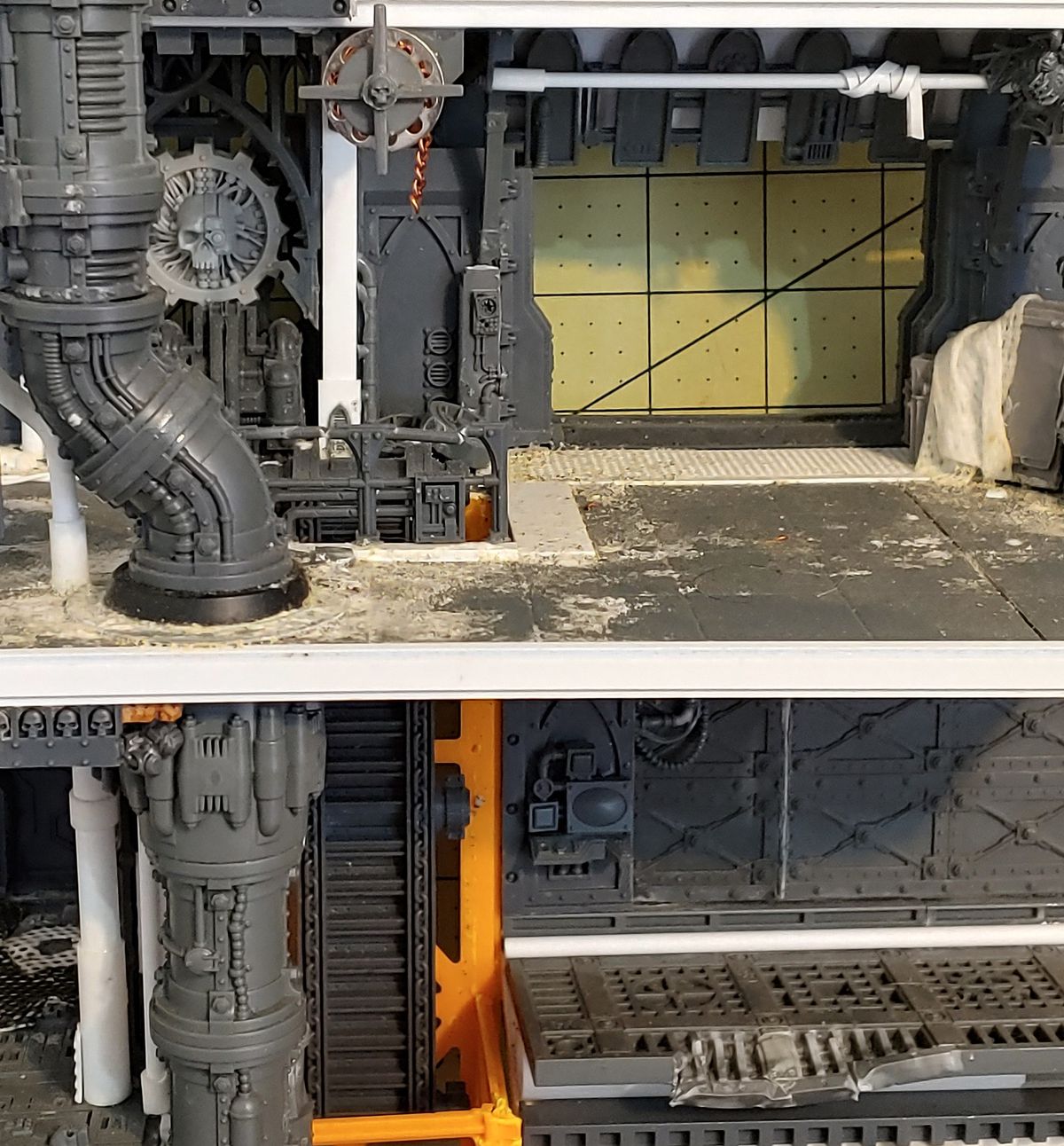
Polygon – All
Source link
Related Post:
- Free Play Days – Warhammer 40K: Inquisitor – Martyr, Warhammer: Chaosbane, and Warhammer 40K: Mechanicus
- Warhammer games – the best Warhammer and Warhammer 40K PC games
- The best Warhammer 40K games: Every single Warhammer 40,000 game ranked
- Warhammer 40k: Darktide finds horror and humour in humanity
- Review: Kill Team reboot brings D&D-style storytelling to Warhammer 40K
- Warhammer 40K Sisters of Battle comic is stuck in the game’s past
- Games Workshop promises not to sell out of new Warhammer 40K Kill Team
- Warhammer 40K Battlesector is getting new factions and a new “in-depth” difficulty
- Here’s a PC case that looks like a Warhammer 40k super-heavy tank
- NECROMUNDA HIRED GUN Walkthrough Gameplay Part 1 – INTRO (FULL GAME)
